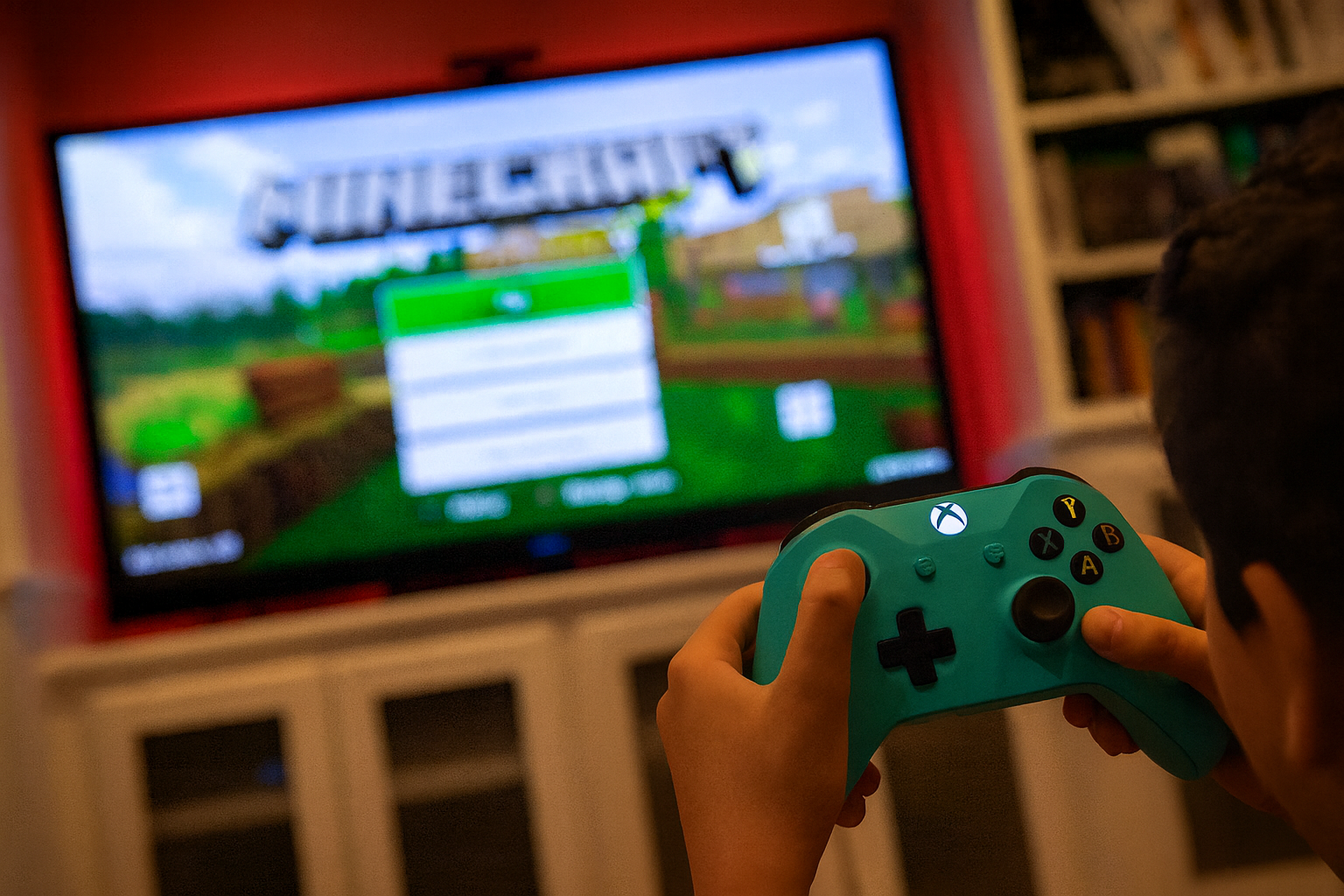Understanding the gaming and gambling connection
The difference between gaming and gambling can sometimes be small. There can be practices in some video games that border on gambling or can encourage kids to develop a gambling mindset.
The reason for this is skins, valuable virtual items within games, that you might be lucky to get hold of by purchasing loot boxes, a cheap and small collection of random items. Similar to buying a lucky bag or pack of Pokémon cards, not knowing what’s inside, but hoping for the chance and luck to get a valuable item.
Many kids are eager to trade skins to get the perfect look for their gaming profile. It's a big part of the gaming world that most players will encounter. Lootboxes can be a cheap way to get an expensive skin, if you are lucky.

What is skin gambling?
When it comes to the risk of video game gambling, skins are often the reason for this temptation. Skins in games are of great importance to the player, and there is a big trading market around the practice of buying and selling skins.
The opportunity to acquire a rare or valuable skin by chance by buying lootboxes at a much lower price than a rare skin would be worth can be tempting. Some players speculate on getting their hands on valuable skins to sell them for a profit.
However, this way of trading skins, hoping for a profit, can be a gateway to gambling. Skins can be used as currency on gambling sites, and players can end up spending a lot of money for a chance to get valuable skins through loot boxes.
It can be tempting to start gambling with skins, but this can lead to serious issues. Gambling can become addictive, setting the stage for a long-term problem. Ironically, the worst thing that can happen when you gamble is winning, as it might entice you to keep trying over and over again.
What are loot boxes in games?
Loot boxes in video games are virtual grab bags with unknown contents, containing virtual items like skins or weapons for use in a game. Sometimes, you may end up paying more than what you receive in value, while other times, you might get lucky and score rare, expensive items.
Although you may have an idea of the possible content, you can never be certain you'll get exactly what you want.
Loot boxes’ definition is somewhat similar to the description of slot machines at a casino. You know how much you have to pay, but you don't know what you'll get in return.
You might spend more than the contents are worth, or you could strike it lucky and receive something rare and highly valuable. These features are present in many games, where the thrill of unpredictability and the hope of obtaining something desirable can be very enticing.
They are especially prominent in games like Counter-Strike, where loot boxes are well-known, and in FIFA, where they appear as FUT packs.
Typically, you gain access to a loot box by using in-game currency or making direct payments. Sometimes, you can earn them by winning in-game challenges or through promotions on streaming platforms, where you pay with your time and attention.
It can be tempting to buy loot boxes in hopes of landing valuable items for resale. However, it's important to remember that this is purely a game of chance, not designed to give the buyer an economic advantage. Additionally, it can easily lead to the beginnings of a gambling problem.
“Is loot boxes gambling, or can this virtual feature lead to issues with gambling?”. This is a valid question and concern that parents may have. The potential gain when buying lootboxes and the active skin trading market can lead to gambling behavior for some. If your child is excited about skins and loot boxes in gaming, this risk is something you should be aware of.
What parents need to know about how skin betting works
Betting skins involves wagering skins in games of chance. It includes any form of gambling where the stakes and/or rewards are skins, hence the term "skin gambling." It can be understood as a kind of underage gambling and can be a potential risk to kids who are sensitive to the lure of gambling.
There are two primary forms of skin betting: loot box gambling and more traditional casino-style gambling.
Even though skins are just virtual items in games, they cost real money and hold real value to players. If you are curious to know more about skins and why they are so important in the gaming world, our skin parents guide has all the answers for you.
Loot boxes and gambling
The first and most common form of skin betting involves loot boxes. Gambling issues are seen as a result of loot boxes being designed as a digital grab bag where you pay a small fee to access the contents without knowing what’s inside.
It might contain a variety of skins or other in-game items, with the hope that one of them will be rare or valuable enough to sell for a profit. Loot boxes are particularly prominent in games like Counter-Strike and appear as FUT packs in FIFA, making them easily accessible, even to young players.
While most players manage their loot box spending, it's important for parents to be aware that loot boxes and child gambling risks can be connected. There are no regulations or age restrictions in place to prevent young children from opening these virtual grab bags and starting to swap or trade. Early exposure to paid loot boxes and an interest in gambling loot boxes is a risk factor for developing gambling problems later, so it’s wise to keep an eye on this activity.

Casino-style gambling
The second form of skin betting, or skin gambling, often takes place on websites like CS. Money. Here, players can gamble against each other in traditional casino games, using skins as substitutes for real money.
This falls into a gray area of conventional gambling because, although no real money is directly involved, the skins in the pot represent a value that can be converted into real cash. When it comes to skin betting, Counter-Strike skins are the most commonly traded since they can be worth thousands of dollars, making them highly valuable both online and offline.
Is gaming a gateway to gambling?
To what extent can gaming lead to gambling in kids? This might be a concern for parents, and consequently, it can seem logical to forbid the purchase of skins to prevent children from developing a gambling problem.
However, that might not be the best solution. There are many other uses of skins in gaming other than being used for gambling. Most players simply use skins to customize their game characters to express themselves in the game.
For most kids, skins are about making their characters or weapons look cool. It’s similar to how many young people express themselves through the clothes they wear or the accessories they choose.
Skins are about identity and gaining recognition from friends and other players, and for the vast majority, it doesn’t go beyond that. They might trade skins with other players or take the chance with lootboxes, but only to get the ones they want to use themselves
Gambling and gaming safety tips for parents
The lure of gambling is strong around any activity where there’s an element of luck, chance, and financial gain involved. The excitement of unpredictable outcomes and the rush of winning can be highly addictive, especially for young minds. In fact, the worst outcome for a child when they open a loot box or bet their skins is that they get lucky or win.
A parent who wants to know how to spot risky gaming behavior should pay close attention to their child’s interest in skins and how they intend to use them. Parents should engage in conversations about gaming and the skins their child likes, why they want them, and pay attention to what draws them to the idea of loot boxes. Is it purely about customizing their character, or are they motivated by the potential financial gain from betting or selling valuable skins?
Getting involved in your child's gaming interests and learning what to be aware of when raising a gamer will help you spot the signs your child may be gambling and prevent potential problems before they start.





